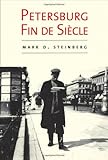Support H-Net | Buy Books Here | Help Support the NBN and NBN en Español on Patreon | Visit New Books Network en Español!
- African Studies
- African American Studies
- American Politics
- American Studies
- American South
- American West
- Asian American Studies
- Australian and New Zealand Studies
- British Studies
- Canadian Studies
- Caribbean Studies
- Central Asian Studies
- Chinese Studies
- East Asian Studies
- Eastern European Studies
- European Politics
- French Studies
- German Studies
- Iberian Studies
- India Studies
- Indian Ocean World
- Iranian Studies
- Irish Studies
- Israel Studies
- Italian Studies
- Japanese Studies
- Korean Studies
- Latino Studies
- Latin American Studies
- Mexican Studies
- Middle Eastern Studies
- Native American Studies
- Pacific Studies
- Polish Studies
- Russian and Eurasian Studies
- Southeast Asian Studies
- South Asian Studies
- Turkish Studies
- Ukrainian Studies
- Western European Studies
- World Affairs
- Animal Studies
- Anthropology
- Archaeology
- Business, Management, and Marketing
- Media
- Critical Theory
- Disability Studies
- Drugs, Addiction and Recovery
- Education
- Economics
- Finance
- Geography
- Gender Studies
- Genocide Studies
- Higher Education
- Human Rights
- Journalism
- Language
- Law
- LGBTQ+ Studies
- National Security
- Philanthropy
- Philosophy
- Policing, Incarceration, and Reform
- Political Science
- Politics & Polemics
- Public Policy
- Sex, Sexuality, and Sex Work
- Sociology
- Sound Studies
- Sports
- Urban Studies
- Big Ideas
- Celebration Studies
- Co-Authored
- Cover Story
- Historical Materialism
- History Ex Silo
- Interpretive Political and Social Science
- Invested Investor
- Landscape Architecture
- Late Antiquity
- Mormonism
- NBN Book of the Day
- NBN Seminar
- Postscript: Conversations on Politics and Political Science
- Practical History
- Preparing for Life After Grad School
- Psychology and Climate Change
- Syriac Studies
- The Chair: In The Room at the Fed
- New Books with Miranda Melcher

Jul 22, 2011
Cars for Comrades
The Life of the Soviet Automobile
Summary
A recent editorial in the Moscow Times declared that in Moscow "the car is king." Indeed, one word Muscovites constantly mutter is probka (traffic jam). The boom in car ownership is transforming Russian life itself, and for some not necessarily for the better. "The joy of personal mobility -- that is, automobile ownership -- has completely eclipsed the value of community life. But the joy of car ownership has long ceased being a joy and has instead become a burden, with traffic jams causing frequent delays, smog and even clogged sidewalks. We have created an environment that is environmentally, socially and economically harmful."
While the detrimental effects of the car have only recently hit Russia, the automobile's political, economic, and cultural significance dates from the early Soviet period. According to Lewis Siegelbaum's recent book Cars for Comrades: The Life of the Soviet Automobile (Cornell UP, 2008), what the Soviets called "automobilism" had multiple meanings. It represented a particularly Soviet understanding of modernity, one rooted in the promise of the socialist system itself. The car also symbolized power and freedom. Power in that the elite usually had cars and, during the Great Terror, cars came to be equated with the secret police. The car meant freedom in that those citizens lucky enough to get one expanded their "private" sphere through greater mobility and leisure. As Siegelbaum shows, the Soviet car may have been an unobtainable luxury for the vast majority of Soviet citizens, but its effects on the Soviet imagination were deep and long lasting.




































































































